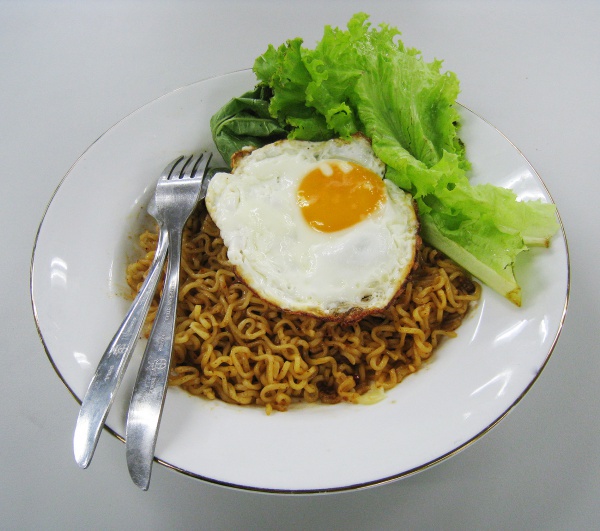Facts About Instant noodle
Instant noodles, commonly referred to as instant ramen, offer a quick and convenient meal solution that includes dried noodles, flavoring powder, and seasoning oil. They can be eaten dry or cooked by simply soaking them in boiling water. These noodles typically comprise wheat flour, palm oil, salt, and flavorings such as monosodium glutamate (MSG) and sugar.
The history of instant noodles begins with Momofuku Ando of Nissin Foods in Japan, who invented them in 1958. His creation, Chikin Ramen, rapidly gained popularity. Today, instant noodles are savored worldwide under various brand names and are featured in dishes like ramen carbonara, Korean army stew, and chow mein.
The production of instant noodles involves several steps: mixing ingredients like flour, water, salt, and kansui (an alkaline water), kneading the dough, shaping it into noodles, steaming, and then drying them either by frying or using hot air. After drying, the noodles are packaged with their seasoning packets and distributed to stores.
One reason for their global popularity is their long shelf life and the simplicity of their preparation. However, instant noodles have faced criticism. They are often high in carbohydrates and fats but low in protein, fiber, vitamins, and minerals. Consuming too many can lead to health issues such as obesity and cardiometabolic risks. Additionally, there have been safety concerns, including reports of lead contamination in some brands like Nestlé's Maggi.
Despite these concerns, instant noodles are consumed in vast quantities around the world. Countries like China, Indonesia, and India are top consumers, each having its favorite brands and flavors. For instance, the MAMA brand is popular in Thailand, while Nissin and Maruchan are well-known in Japan. In the United States, ramen noodles are particularly favored by students and budget-conscious individuals. Other countries, including Nigeria, Vietnam, Poland, and Taiwan, also have their preferred brands and styles of instant noodles.
